Key takeaways
- Hydration is crucial in obstacle course racing to maintain energy, prevent fatigue, and support mental focus.
- Electrolyte drinks and natural options like coconut water can supplement hydration more effectively than water alone.
- A consistent pre-race hydration strategy can significantly enhance performance and prevent fatigue during the race.
- Adapting hydration based on weather conditions and personal needs is essential to avoid both overhydration and underhydration.
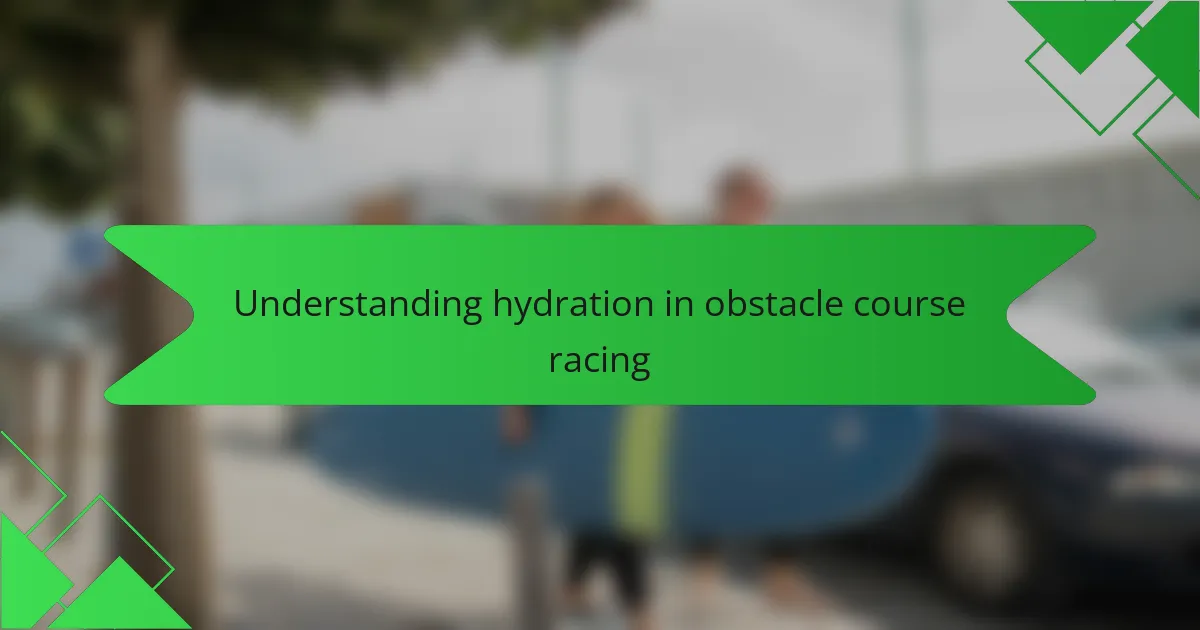
Understanding hydration in obstacle course racing
I’ve noticed that staying properly hydrated during an obstacle course race is a different challenge altogether. Unlike regular running, the mix of climbing, crawling, and running means you sweat more unpredictably. I’ve learned the hard way that drinking just water isn’t always enough to keep my energy and focus up through the obstacles.
| Hydration Type | Pros | Cons |
|---|---|---|
| Water | Essential for basic hydration, readily available | Doesn’t replace electrolytes lost through sweat |
| Electrolyte Drinks | Replenishes salts and minerals, maintains energy | Can be too sugary or cause stomach upset if overconsumed |
| Sports Gels with Electrolytes | Combines hydration and energy boost | May be difficult to consume during intense obstacle sections |
| Coconut Water | Natural source of electrolytes, gentle on stomach | Limited availability on race day, less carb energy |
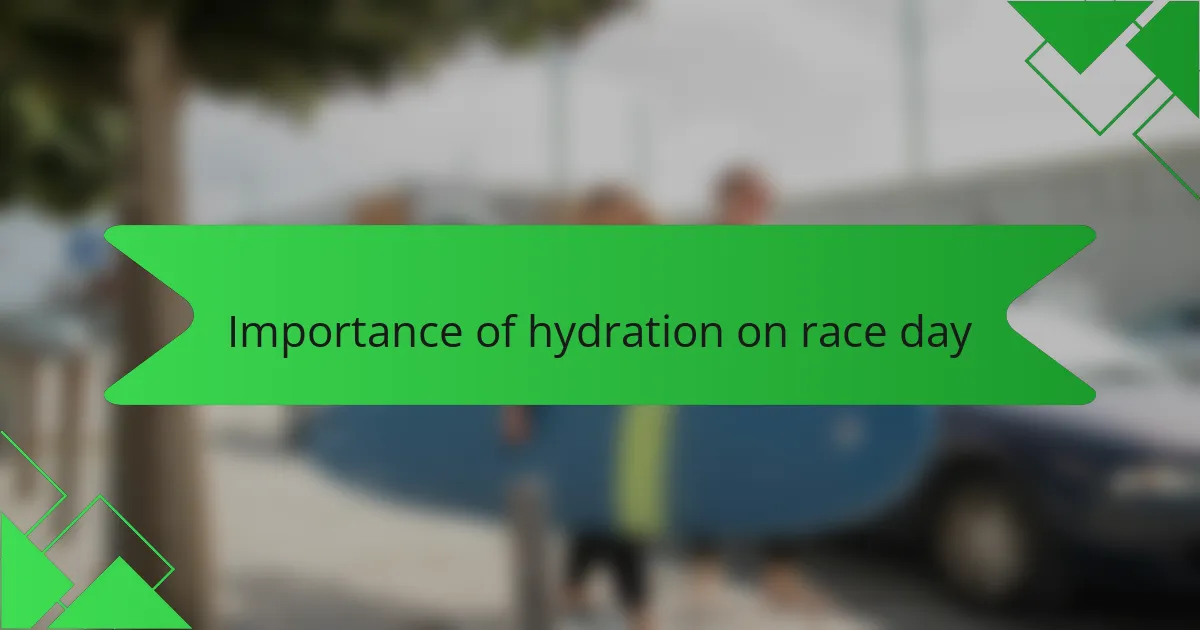
Importance of hydration on race day
Hydration on race day is not just a routine; it’s the cornerstone of how your body performs, especially in obstacle course racing where every ounce of energy counts. From my own experience, I learned the hard way that neglecting proper hydration can lead to exhaustion and even cramps halfway through the course, turning what should be an exhilarating challenge into a frustrating struggle.
Here are the key reasons hydration matters on race day:
- Maintains energy levels and prevents fatigue
- Regulates body temperature, especially during intense physical exertion
- Helps avoid muscle cramps and improves recovery time
- Supports mental focus and alertness for navigating obstacles
- Reduces the risk of heat-related illnesses like heatstroke
Reflecting back, the times I stayed well-hydrated, my performance felt smoother and more consistent, making the race more enjoyable overall.

Choosing the right fluids and electrolytes
Choosing the right fluids and electrolytes became a game-changer for me after realizing water alone just wasn’t cutting it. I started opting for electrolyte drinks that promised to replace what I lost through sweat, but I quickly learned that not all electrolyte drinks are created equal—some left me feeling bloated or gave me an upset stomach. Have you ever felt that sluggish heaviness after gulping down too many sugary sports drinks? That’s what I wanted to avoid.
Coconut water caught my attention as a natural alternative. It felt lighter and easier on my stomach during the race, even though it doesn’t pack the same carb energy punch as some sports gels or powders. I remember one race when I switched to coconut water mid-course—my energy didn’t spike dramatically, but I avoided the sluggish crash that usually follows heavy sugary drinks, which made moving through obstacles feel surprisingly smoother.
In the end, balancing between plain water, electrolyte-enhanced beverages, and sometimes gels was key. What worked best for me was sipping small amounts consistently rather than chugging large quantities sporadically. That steady intake kept my muscles fueled and my mind sharp—something I know anyone who’s tackled a tough obstacle can appreciate.
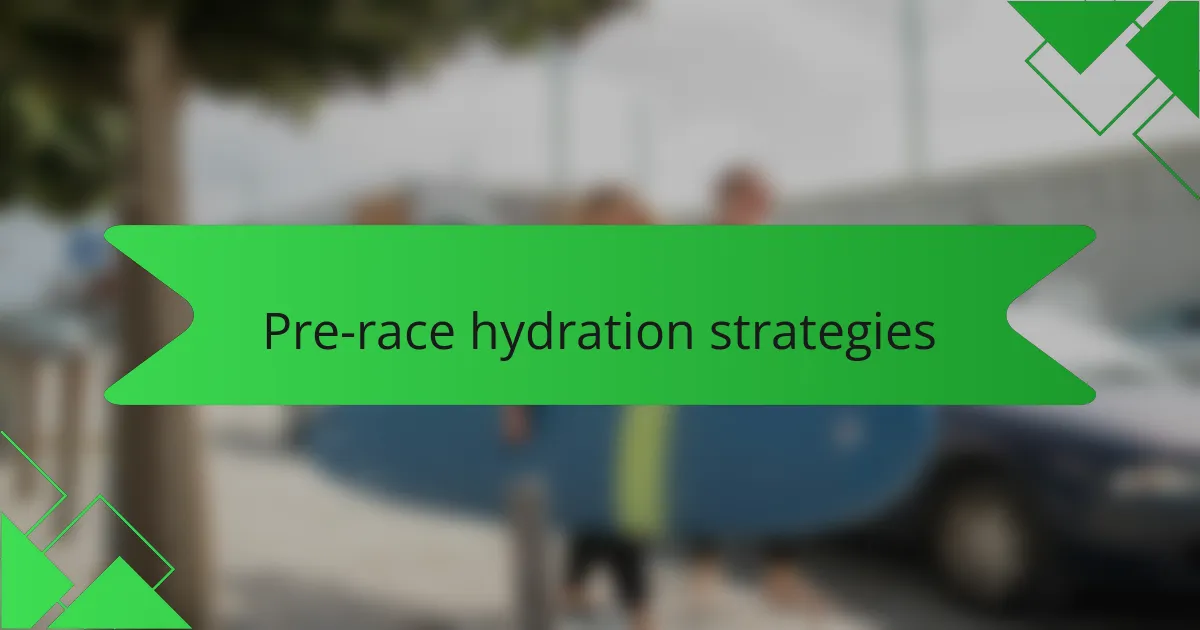
Pre-race hydration strategies
Proper pre-race hydration is something I used to underestimate, but experience taught me its true impact. Before one particularly tough obstacle race, I made the mistake of not drinking enough the day before. I felt sluggish and fatigued early on, which I now realize was largely due to dehydration.
In contrast, when I committed to a solid pre-race hydration plan, the difference was night and day. I stayed energized and my focus sharpened throughout the course. Here are the key strategies I find effective:
- Drink plenty of water consistently starting 24 hours before race day.
- Include an electrolyte drink the evening before to balance minerals.
- Avoid excessive caffeine or alcohol as they can dehydrate you.
- Monitor urine color as a simple hydration indicator—pale yellow is ideal.
- Sip water regularly on race morning but avoid overhydrating right before start.
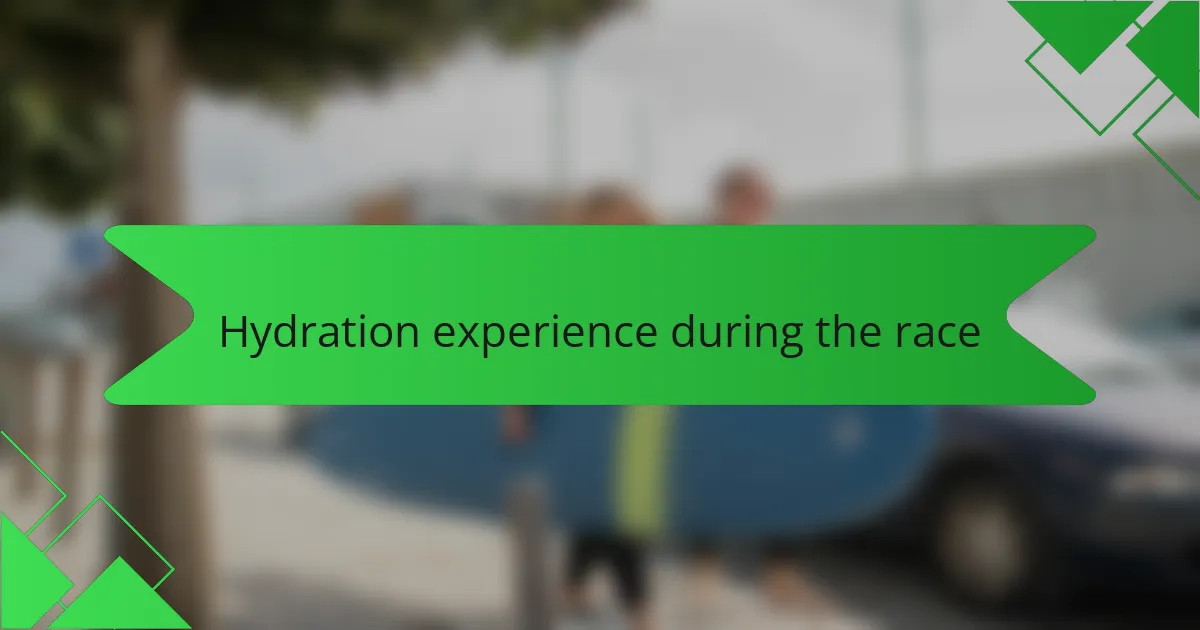
Hydration experience during the race
Hydration experience during the race was tougher than I expected. Around mile three, my usual approach to drinking felt off—I realized I wasn’t sipping enough between obstacles, which left me feeling sluggish and a bit dizzy. It taught me that consistent small sips work better than gulping down large amounts sporadically.
I also found that the electrolyte mix I packed made a huge difference. Without it, I could feel cramps creeping in by the halfway point, but with the right hydration blend, my energy held steady.
- Sipped water steadily, avoiding long gaps between drinks
- Used an electrolyte-infused beverage to prevent cramps
- Carried a lightweight hydration pack for easy access
- Avoided overhydration to dodge feeling bloated or heavy
- Paid attention to thirst signals rather than sticking rigidly to a schedule
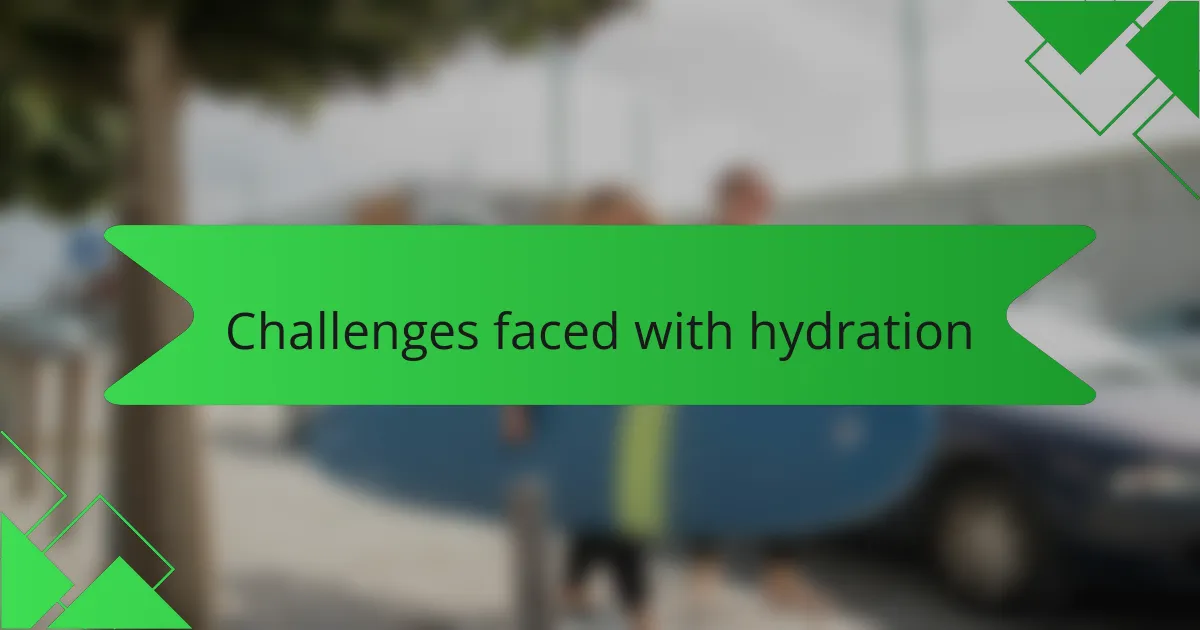
Challenges faced with hydration
Challenges with race day hydration can be more complex than I initially thought. Despite preparing well, I often found it tricky to balance drinking enough without feeling bloated or having to stop too frequently. It’s a delicate dance between staying fueled and staying light on your feet.
Another hurdle is dealing with the unpredictable weather and how it affects my hydration needs. On hot days, I felt drained quickly, but overhydration on cooler mornings sometimes slowed me down, making me realize how important adjusting intake based on conditions really is.
| Hydration Challenge | My Experience |
|---|---|
| Overhydration | Led to uncomfortable bloating and frequent bathroom stops |
| Underhydration | Caused early fatigue and muscle cramps during the race |
| Weather Impact | Required constant adjustments to fluid intake depending on temperature |
